#stollberg
Explore tagged Tumblr posts
Text












christmas time . . . | uwhe-arts
#time of advent#Erzgebirge#photographers on tumblr#uwhe-arts#original photographers#uwhearts#original creators#photography#vertical#christmas#christmas market#Bergparade#Schwippbogen#christmas lights#2023#Stollberg Erzgebirge
124 notes
·
View notes
Note
Sometimes read how Emperor Maximilian I of Mexico was the better looking one and others have Emperor Franz Josef as the handsomer brother. Again, the caveat "eye of the beholder" subjectivity and looks given way more importance than they ought to get, still a bit confused on the conflicting description.
Hi! Tbh, "beauty is in the eye of the holder" is most of the times the correct answer in this cases, but also it should be noted that beauty was seen as a reflection of a person's morality - and in the case of kings, as a reflection of their capacity as rulers.
Quoting Barbara Stollberg-Rilinger in her Maria Theresa biography:
So long as rule rested on birthright and was passed on in quasi-natural fashion from the ruling couple to their offspring, the condition of their bodies—their beauty and integrity, their hygiene and discipline, their health and, above all, their fertility—played an absolutely central role. (...) if the ruler’s body failed to meet the demands placed on it, if it was sick, feebleminded, sterile, or infirm, it jeopardized the continuity and acceptance of dynastic rule and encouraged rival claimants to the throne. The ruler’s beauty is an ancient topos. It can already be found in Old Testament psalms and is still encountered in fairy tales today. The king is the handsomest man, the queen the fairest lady in all the realm. They can hardly be otherwise, precisely because they are king and queen. In a well-ordered, legible world, the visible exterior reliably reflects the invisible interior. Beauty was ascribed an indicative value: it was the sign of divine blessing, virtue, and purity. To be sure, Christian theologians warned against false appearances, the beautiful surface gnawed at from within by the canker of sin. Yet this did little to detract from beauty’s suggestive force. (...) In other words, beauty was a virtue in rulers, endowing them with charisma and endearing them to their subjects.
A queen or king being described as very beautiful or handsome, therefore, could (and did) have double implications. Of course, many times monarchs didn't fit the beauty standards of their time, and it was noted by their contemporaries. But when presented to their subjects, they should still look their best: portraits were beautified, pictures were retouched, waists (both male and female) were corseted. Monarchs who didn't or couldn't do this would, unavoidably, raise some commentary.
Going back to the ask, both Franz Josef and Maximilian were emperors - meaning their bodies were under scrutinity the same way their capacity as rulers was. Max's lack of children, for example, was to be one of the many problems he faced in Mexico - and by the end, his and Charlotte's apparent infertility was an attack target for their oppositors. So any commentary on their looks, specially if it's done in public (and not in say, a private diary), should also be read keeping this context in mind.
9 notes
·
View notes
Text
Love and marriage
Currently hanging out outside the Napoleonic era for a bit by reading Barbara Stollberg-Rilinger's biography of Maria Theresia of Austria. But I thought these general remarks on people's attitude towards love and marriage at the time might be interesting, as I think it was very much alive and kicking still at Napoleon's court [translated from page 255f]:
Since marriages were arranged according to family interests, [...] one could not make too high demands when it came to the couples' personal emotional attachment. On the contrary, being in love was considered the worst prerequisite for a lasting and good marriage. Passionate love and marriage were downright mutually exclusive. [...] Love was seen at best as a consequence, not a prerequisite for marriage, and even then this meant rather a friendly bond. Love in the sense of passionate erotic relationships, on the other hand, took place outside of marriage and was the subject of a refined aristocratic culture of gallantry. […] Books taught the art of seduction, a sophisticated game of encouragement and rejection, dissimulation, siege and conquest. In this literary universe, women were divided into two categories: the coquettes, who "always say yes", and the precious, who "always say no". A coquette was to be tied to oneself permanently, a precious one was to be conquered. The latter was the most desirable goal for an ambitious galant homme; the Precious, as her name suggests, was considered the most valuable prey.
37 notes
·
View notes
Text



German combat swimmers of the Naval Special Forces Command (KSM) practice evasion and firefights at the Putlos military training area in Holstein.
Martin Stollberg / Bundeswehr, October 7, 2015
11 notes
·
View notes
Text

She herself took a more disillusioned view. Among intimates, she occasionally spoke of herself as "la grosse Therese," fat Theresa. Writing to Antonia of Saxony in October 1749, at the age of just thirty-two, she declared herself old and overweight; anyone who had not seen her in the last ten years would fail to recognize her. And to her favourite lady-in-waiting, Trautson, she lamented in 1754: "Those who had not seen me in either years could hardly get over how obese I had become. It must be quite remarkable; but to sugar the pill, they assured me they found my complexion fairer and much improved. Still that does nothing to undo the first blow." Yet even those who met her in the 1770s mostly described her as still beautiful, despite her considerable girth and the pockmarks left behind by an attack of smallpox.
Maria Theresa: The Habsburg Empress in Her Time - Barbara Stollberg-Rilinger
43 notes
·
View notes
Text
Kleiner Podcast Tipp zum Wochenende: Karsten Blumenthal (Kika Moderator & Rolle Herr Fabian in Seelitz) im Podcast von Philipp Gerstner und Daniel Wachowiak (Sven & Leon aus Seelitz)
Geht nicht nur um SE, sondern auch allgemein um Kinderfernsehen bzw. den Kika in den 90ern/ frühen 2000ern, also auch daher ganz interessant :)
Singa, Juri und Karsten sind bis heute befreundet
Karsten war dafür vorgesehenen Peter Lustig bei Löwenzahn zu beerben, hat aber abgelehnt
Auch er hat wohl erst spät vom Umzug von SE nach Erfurt erfahren und war unglücklich über die Kommunikation
Er selbst konnte mit Mathe, Chemie, Physik wenig anfangen und tat sich daher zum Teil schwer damit die Texte zu lernen
Er hat sich mit Wilfried Loll (Herr Stollberg) und Shirin Soraya (Frau Klawitter) besonders gut verstanden, unter den erwachsenen Darsteller:innen gab es aber keine engen Freundschaften
Die Regisseurin Renata Kaye wird von allen sehr gelobt
Das einzige Mal, dass er sich bei den Autor:innen über eine Story "beschwert" hat, war die Story, in der Herr Fabian in einem anonymen Chatroom unbekannterweise mit Iris flirtet, da das als "Kavaliersdelikt" abgetan wird, aber Potenzial gehabt hätte, Jugendliche stärker zu sensibilisieren
Die Nachnamen der Rollen waren z. T. von realen Mitarbeitenden der Produktion inspiriert (Herr Hecht und Familie Fabri werden als Beispiele genannt)
12 notes
·
View notes
Text
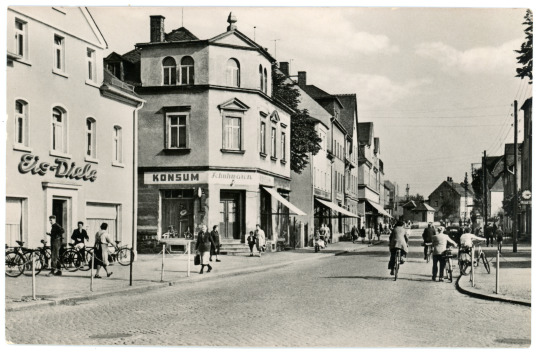
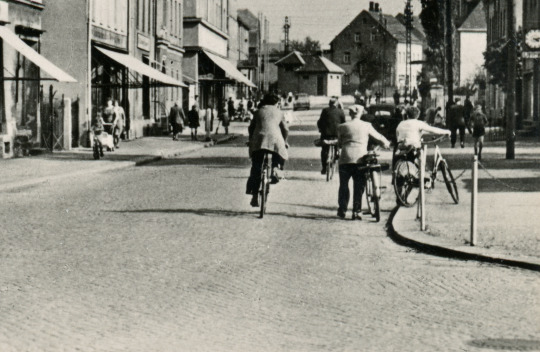

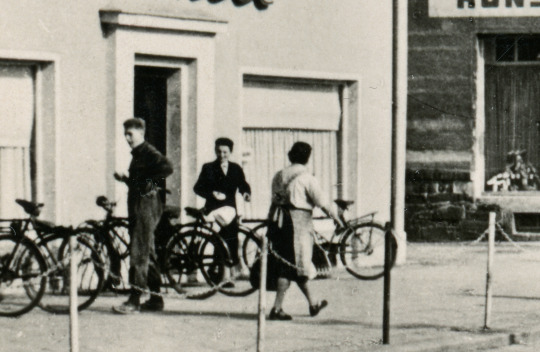
"Ich freu mich schon sehr darauf."
Ansichtskarte
Lugau (Erzgeb.) Stollberger Straße
Reichenbach (Vogtl): VEB BILD UND HEIMAT Reichenbach i.V. (V 11 28 - A 3/62 - DDR 14/2609 964/62)
1962
#Lugau#Bezirk Karl Marx Stadt#BILD UND HEIMAT#1960er#1962#Philokartie#DDRPhilokartie#Architekturphilokartie#akLugau#BezirkKarlMarxStadt#Eisdiele#Erzgebirge#AlltagskulturDerDDR#Schuhgeschäft#Ansichtskartenfotografie#AnsichtskartenfotografieDerDDR#deltiology#VintagePostcard
16 notes
·
View notes
Text
SE Staffel 1 Rewatch (Folgen 59-62)
Oh no, Pasulke hat Angst vor einem Herzinfarkt 😦 aber Frau Seifert kann ihn zum Glück wieder beruhigen, er muss keine Krabben mehr essen (was auch immer das für eine komische Idee war) und Alexandra hat ihm sogar Grießbrei vom Mittagessen aufgehoben. Awww ☺️
Katharina übertreibt mal wieder maßlos bei ihrer Geburtstagsplanung. Aber dieses Plakat ist schon großartig - ist sie sicher, dass die beiden Jungs sie damit nicht komplett verarschen wollen? 😂

Es ist aber trotzdem nicht das seltsamsten Plakat, dass bei denen an der Pinnwand hängt:

Ich habe Fragen 😅 bzw hatte ich Fragen, bis ich auf diese Seite gestoßen bin: https://www.aerarium.de/aerarium/docs/web_alt/Luftffisch-Web/Luftffisch-Webseiten/ie/ie_home.htm# - jetzt ist mir natürlich alles klar! (um das zu verstehen, muss man glaub ich 1998 dabei gewesen ein 😂)
Die Jagd auf den Umweltverschmutzer (der die Ölfasser in den See geschmissen hat) geht so richtig los. Dass die Möchtegern-Pfefferkörner den Schrottplatz mit einer Lichtschranke überwachen wollen ist, im Gegensatz zu der Pferdeentführung, ja ein nahezu brillanter Plan! "Am besten geht der Alarm bei mir los, ich kann nachts am schnellsten nachsehen, was los ist." - was will uns das sagen? Dass bei Wolf zu Hause niemand aufpasst, was die Kinder so treiben? Hat er etwa eine tragische Backstory? Please, tell me more, Schloss Einstein!
Und der arme Atze! Alle verdächtigen (leider zu Recht) seinen Vater und er fühlt sich total in die Enge getrieben 😞 Und wieder mal richtig gut gemacht, wie sie das Thema schwierige finanzielle Situation und Zukunftsängste eingebaut haben. Atzes Vater bringt das richtig überzeugend rüber - leider hilft das Atze auch nicht so wirklich. Richtig doofe Situation, auch für die anderen, die Atze natürlich nicht hintergehen wollen, aber auch die Ölsauerei nicht ungestraft lassen wollen. Awww, und dann Atzes Strahlen, als sein Vater bei der Polizei anruft und sich selbst anzeigt - wie erleichtert er ist 🥹
Katharina plündert lieber die Klassenkasse und die Bandkasse, anstatt mal mit irgendjemand über das Problem zu reden, dass sie kein Geld hat? Und die Partyplanerin kommt unangekündigt ins Internat und fragt eine 14-jährige nach 600€ Anzahlung in bar? Bin ich die einzige, die das absolut unseriös findet? 🤨 Bin gespannt, wie das Fräulein Prinzessin sich jetzt ohne Geld so schlagen wird - die Idee mit dem Verkauf ihrer Klamotten ist ja schonmal ganz smart.
Oh no, Stollberg hat Tamagochis verboten!!! 😱 Ichbinaltichbinaltichbinalt 🫠
Nadine und Iris packen in einer halben Minute alle Klischees (positiv und negativ) über "Öko-Leute" in eine einzige Unterhaltung. Die sind nämlich alle stark und braungebrannt oder haben Pickel und einen Pferdeschwanz oder eine Mischung aus beidem. Außerdem sind sie definitiv alle männlich. Dass Jo auch eine Frau sein könnte, fällt natürlich keiner von beiden ein. Und innerhalb von ein paar Minuten kommt dann direkt noch ein zweiter Diss gegen Pickel. Iris beschwert sich nämlich, dass sie "schon wieder einen Pickel" bekommt (einen! I would have been happy wenn ich die noch einzeln hätte zählen können in dem Alter^^) und nicht aussehen will wie ein "Streuselkuchen". Das war für Jugendliche mit Pickeln sicher super zu hören. Danke für nichts. Aber die Umwelt-AG mag ich sehr. Jetzt hab ich richtig Lust, ein Hecke anzulegen und Nistkästen aufzuhängen. Und irgendwie hat sich in den 20 Jahren nicht soo viel geändert - die Jugendlichen beschweren sich nämlich auch schon, dass die Erwachsenen sich nicht genug um die Umwelt kümmern. Nur, dass es damals noch nicht ganz so dramatisch war wie jetzt. "wir müssen später in dem Schrotthaufen leben, den die uns überlassen" I feel you, Vera 🥲
Oh oh, Nadines leibliche Mutter ist da und trifft zufällig auf ihre Adoptiveltern. Schon wieder so ein heavy Familienthema. Give them a break, Schloss Einstein Team 😅
Wie die Mädels versuchen, Jungs für den Tanzkurs zu rekrutieren, ich brech zusammen 😂 und am Ende haben alle zugesagt - die "wir können ihnen schlecht tanzlos das Kampffeld überlassen"-Crew aus dem Internat und auch Wolf "mein letzter Tanzkurs ist schon eine Weile her" und Ingo "ich denke, zeitlich bekomme ich das doch hin" aus dem Dorf. Oh bitte bitte lass es jetzt zu viele Jungs sein, sodass die zusammen tanzen müssen. Ich will das!!! 😄
10 notes
·
View notes
Text
It would be better off to start by acknowledging that the era we are seeking to recreate was structurally different to our own. We can then ask which of these differences are "noteworthy and meaningful" for understanding our cast of characters. For when it comes to historical understanding, foreignness is not a barrier but a necessary starting point. Historical understanding cannot be had free of charge; it demands determined hermeneutic effort. For instance: what did people take for granted back then; which conceptual categories did they apply; which social distinctions did they make; what was the unspoken logic underlying their actions; on which expectations, rules, and conventions did they orient their behavior; what stock of common knowledge could they draw on; which habitualized routines did they employ; how did they typically express their feelings; what limits were set to their actions? Potentially, all these things were fundamentally different from what appears self-evident to us today, and the gap separating "now" from "then" needs to be gauged as precisely as possible.
~Maria Theresa: The Habsburg Empress in Her Time, Barbara Stollberg-Rilinger (trans. Robert Savage)
#this is the best and most succinct way i've seen it put aaaaaa#history#history major syndrome#quote#man#i respect this author so much she knows her shit
11 notes
·
View notes
Text
Gašper Levičnik/Caspar Levitschnigg (1772–1825)
Baptized on January 6, 1772 in Eisnern (now Železniki) in the Duchy of Carniola (modern-day Slovenia), then part of the Hasburg Monarchy.
Studied at the Jesuit gymnasium in Laibach (now Ljubljana, Slovenia), then the St. Anna gymnasium in Vienna. Studied law at the University of Vienna, graduated a Doctor of Law in 1798. Taught canon law at the same university in 1799 and 1800.
Had his own law practice from 1801. Married Catharina Lessacher, the daughter of a professor at the St. Anna gymnasium, that same year. Purchased three lordships in Lower Austria (Oberstinkenbrunn in 1807, Königsstetten in 1814, Stollberg in 1817).
Nobilitated in 1815 for "service to the state and noble handling of his subjects", elevated a Ritter in 1818 with the predicate von Glomberg.
Died on January 20, 1825 in Vienna.
Fig 1 (coat of arms as Edler):

Fig 2 (coat of arms as Ritter):
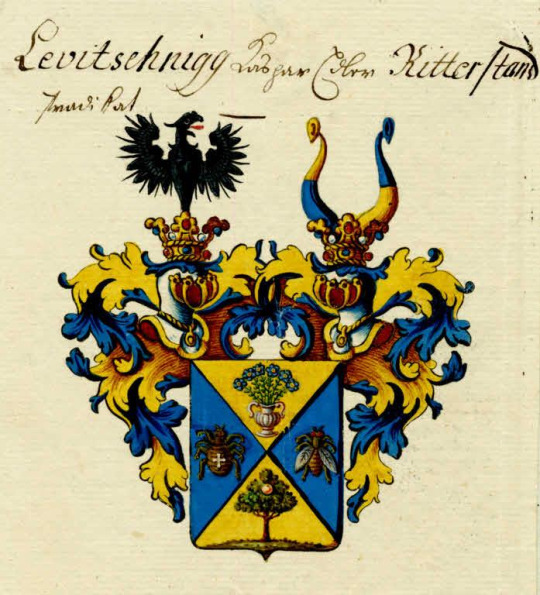
#18th century#19th century#1700s#1800s#Slovenia#Vienna#Wien#Slovenija#Habsburg Monarchy#Austrian Empire#Österreich#Austria#history#biography#important-people#Slovenian history#Austrian history#Central Europe#Central European history
10 notes
·
View notes
Text
An dieser Stelle einmal mehr der Hinweis:
Die Regierung des Landes Sachsen (formal ein demokratisches Bundesland) wird seit 1990 von der CDU gestellt.
Eventuelle Unterschiede entdeckt ihr bitte selbst.
2 notes
·
View notes
Text
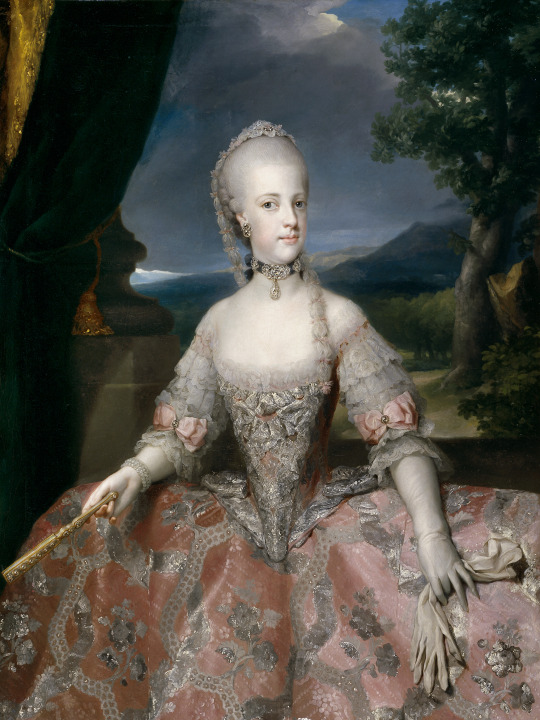

Once she [Maria Carolina] had subdued her husband and massively improved her own standing by producing a son, she had Ferdinand dismiss the old minister, against Charles III’s opposition, and replace him as state secretary with the former Sicilian emissary in Vienna. And in 1778 she began regularly attending meetings of the State Council as the heir’s mother, just as Kaunitz had initially advised her to do. In short, she showed herself to be a true daughter to her mother: not just externally but above all temperamentally. Sanguine, spirited, intelligent, and accommodating, yet also strong-willed and confrontational when necessary, she proved a masterful manipulator of her husband—albeit for her own ends, not those of her mother. She had always successfully resisted having a lady-in-waiting sent from Vienna to spy on her, and she was similarly adept at evading supervision by the imperial emissary, Wilczek. She was too much like her mother to tolerate being used as her instrument.
Maria Theresa could not begrudge her daughter her respect. In 1772 she reported to Marquise d’Herzelles: “The Queen is conducting herself very well … and I am assured that the king has already mended his boorish and filthy ways.” “I love this daughter very much, and she deserves it too,” she wrote to Countess Enzenberg, meaning: in contrast to Amalia in Parma and Antonia in Versailles. She subsequently held up Carolina to the other children as a paragon of candor and obedience, and even King Ferdinand, about whose character defects she was under no illusions, eventually rose in her estimation to become (temporarily) her second-favorite son-in-law, gendre bien aimé. She expressed herself more frankly to Maria Christina, who in 1775 was to travel to Naples to ascertain that all was in order: “You know how dear your sister is to me; justice compels me to say that she is, after you, the one who has shown me the most true inclination, asked for my advice, and heeded it too. But young and spirited as she is, partnered with so heated and ill-mannered a husband, surrounded by all possible ills, what hope can there be for her? It is a miracle that things are still running as they are, and,” she added in canny self-awareness, “more harm than good is to be expected from advice offered from abroad.”
Even Carolina had not always been open and trusting with her, she complained. That she was not quite so satisfied with her independent and strong-willed daughter in Naples as she claimed is also confirmed by Leopold, who in 1778 noted in his diary that the empress hardly bothered any more with “Neapolitan affairs as she is somewhat irritated with the queen, who does not appreciate others mixing in her business.” Toward the end of her life, pity for Carolina regained the upper hand: “The poor Queen deserves … sympathy,” she wrote in April 1780.
Stollberg-Rilinger, Barbara (2020). Maria Theresa: The Habsburg Empress in her Time (translation by Robert Savage)
#finally getting to answer my asks and i had to consult the maria theresia bible for one of them#queen maria carolina of naples#empress maria theresia#historian: barbara stollberg-rilinger#maria theresa: the habsburg empress in her time#historicwomendaily#house of habsburg
68 notes
·
View notes
Note
So, I saw this in a group that someone shared an article that was made in 2021, from Daily Express (not surprising), but it was speaking about Barbra Valentin.
Which this is what the person wrote about (sorry if it's long but reading it infuriates me):
Freddie Mercury's other woman after Mary 'They were in love, she was even wilder than him'
FREDDIE MERCURY loved Mary Austin his whole life. Even though he was a gay man, he also had one more passionate and intense relationship with outrageous actress Barbara in the mid-1980s, just before he met Jim Hutton. They even shared a bed and Freddie immortalised her in Queen's It's A Hard Life video.
Freddie Mercury and Mary Austin's break up discussed by friends
It's A Hard Life remains most famous for its outrageously OTT video, but Freddie's bandmate Brian May believes it is also one of his friend's most beautiful compositions. There is a moment when the Queen frontman sings the iconic and heartfelt line, "Two lovers together, to love and live forever in each other’s hearts." In the video, he is looking at the voluptuous and glamorous woman leaning over the balcony above him. This was Barbara Valentin, who shared two extraordinary years with Freddie in Munich. She remained close to him until the very end and was one of the few invited to his last ever birthday party.
This weekend marks the release of “It's A Hard Life” in 1984. At the time, Freddie was already living in Munich. He had discovered the German city in 1979 when the band recorded the album The Game at the famous Musicland studios.
Freddie's fame meant he increasingly struggled to find privacy in the UK at the same time as he had begun to explore his sexuality. Munich's thriving gay scene offered him freedom and opportunity.
From 1983-1985 the star made Munich his home and even bought a flat with devoted new friend Barbara.
Busty blonde bombshell Barbara was notorious in Germany as the provocative star of saucy films. Freddie loved her outrageous character and his friends believed he had met his match.
His PA and close friend Peter Freestone said: “They had the most intense, loving relationship. I know one hundred percent they shared a bed on numerous occasions."
Another friend, West End star Peter Straker, said: "I was told he just met this woman who was larger than life. Barbara was very outrageous. She was the queen of nudity.”
Royal Ballet star Wayne Sleep added: "Freddie was with a woman. So I thought.’There you go. He’s not predictable at all, is he, this boy?.’"
Another friend said: “It was almost like he enjoyed being with someone who had a wilder reputation than him.
Many years later, Barbara’s daughter Minki Reichardt said: “I know they were in love. I know that my mother was in love with him because she said so.
"I think their relationship was very close and very intense. They really liked the conflict. They were talking, shouting, arguing, and then they were in their arms again, it was always very lively. I think Freddie was the love of her life."
Barbara's German friend Elisabeth Volkmann went even further: “Freddie loved Barbara. Barbara loved him. And it was a big love between both. If he wouldn’t be homosexual, maybe they married “.
Except, of course, Freddie was homosexual. While Wayne Sleep believed Freddie had slept with Barbara. He certainly spent nights with her at her apartment on Stollberg Strasse. Peter Freestone remains a little more coy on the subject.
He added: "I wasn’t sitting in the room. I can’t tell you yes or no if sex happened. If it had, Freddie could not have been quiet about it."
In fact, for most of those two years in Munich, Freddie was also in a relationship with local restauranteur Winnie Kirschberger, despite the fact that neither spoke the other’s language.
Whatever her feelings for Freddie, Barbara was under no illusion about his sexuality. Like Mary before her, Barbara loved and supported the star and, in this case, provided even more vital and personal help to the men’s relationship.
Freestone said: "it was sometimes comical to watch the arguments happening... Both Freddie and Winnie would be screaming at Barbara who had to do her best to try to sort out the jumbled emotions."
It was an intense period in Freddie's life but the star was beginning to feel homesick and Mary had finally completed all the renovations to his new London house, One Garden Lodge, in Kensington.
The tumultuous relationship with Winnie was fizzling out and a new man from London, Jim Hutton, was on the scene. Freddie never actually moved into the flat he bought with Barbara and returned to the UK. Although he split up with Winnie, Freddie remained close to Barbara for the rest of his life and she flew over to see him one last time in 1990.
In September 1990, Freddie threw his last ever birthday bash, a very smart formal dinner. The following year he would be far too ill.
His close friend Dave Clarke, who was the man by his side when he died, recalled a very intimate night, filled with those Freddie loved most, including Barbara, who sat either side of him with Mary.
Clarke said: "On his last birthday, he just invited 30 of his closest friends and there were 30 different courses, done by his personal chef, Joe Fanelli, and 30 different types of wine to go with each course."
Freddie died the following November. Barbara herself passed away from a stroke on February 22, 2002.
By STEFAN KYRIAZIS.
*****
Just like Mary, this is making Barbra look like a saint when she wasn't either. She was weirdly possessive of Freddie. She wanted to rekindle the spotlight she had that was dimming out and she used Freddie.
Wayne Sleep, believing that both Freddie and Barbra slept together, reinforces that Freddie didn’t care about the consequences of his illness because he cared more about sex than people’s welfare, and was happy to risk spreading AIDS onto someone for the sake of a quick fix. Which we all know that's is not true. Freddie cared about others, especially the ones that betrayed and hurt him. While Freddie and Barbra were close they were not intimate with each other or screwed around.
Barbra was NOT a friend towards Freddie she made lies after lies about Freddie. Leaking stories to the German press that she and Freddie we're lovers and secretly engaged, claimed that Freddie was "abusive and pushed her head in a sink making her manager trying to get Freddie off of her", said he was pretending to be gay for clout and intentionally spreading AIDS to whoever he slept with.
Which Freddie learned about what she did and cut off the friendship with her. It's reasons why Brian absolutely despised her.
I'm surprised here it didn't talk about Freddie's funeral, by saying Barbra attended the funeral, while she wasn't. She was completely banned from attending by Jim and Mary after what she did to Freddie.
I mean, it’s the same bullshit we’ve seen for the past 30 years. “Oh yeah he was gay BUT he was in love with a woman” is not how it works, everyone knows that’s not how it works, but homophobes are somewhat more comfortable with Freddie fucking men if they think it was only ever sex with them and that his heart always belonged to women. Of course, the article intentionally leaves out quotes where Freddie’s friends, including Phoebe, confirmed that they never had sex. As you said, it also excludes that Barbara lied about Freddie and their relationship while he was alive, prompting him to distance himself from her, and she only doubled down once he was dead because she was a freak who used his name for clout and couldn’t cope with the fact that he’d never return her feelings.
She definitely wasn’t a real friend to him. Real friends don’t tell awful lies to the press like that, and they aren’t possessive, either. It seems like she was both possessive and pretty manipulative of Freddie, but people are fine with all of that as long as they could pretend Freddie felt romance for women to satisfy their homophobic butthurt feelings. Brian hates her and Roger said she was a bad influence on Freddie—there is no reason to defend this woman and repeat her lies.
And of course the article mentions Mary, too. There’s quite the overlap between Mary stans and Barbara defenders, because both wish Freddie wasn’t as gay as he was. It’s pathetic that articles like this are still published in the 2020s.
4 notes
·
View notes
Text
District metals, Boliden increases 2025 research budget for tomtebo and stollberg real estate
District metals, Boliden increases 2025 research budget for tomtebo and stollberg real estate Source link
0 notes
Text
District metals, Boliden increases 2025 research budget for tomtebo and stollberg real estate
District metals, Boliden increases 2025 research budget for tomtebo and stollberg real estate Source link
0 notes
Photo
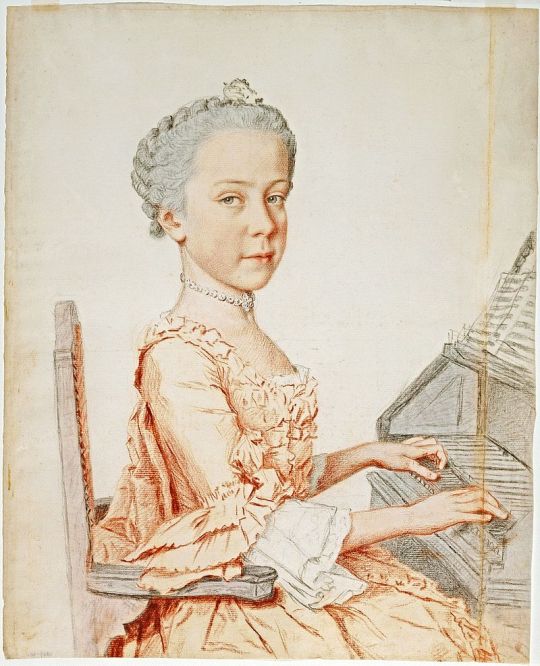
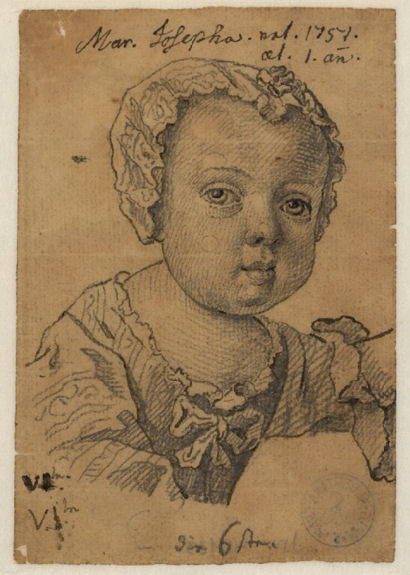
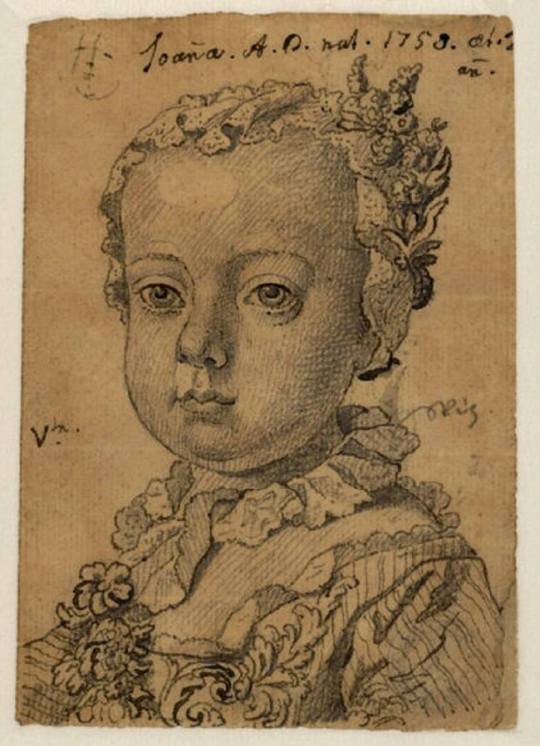
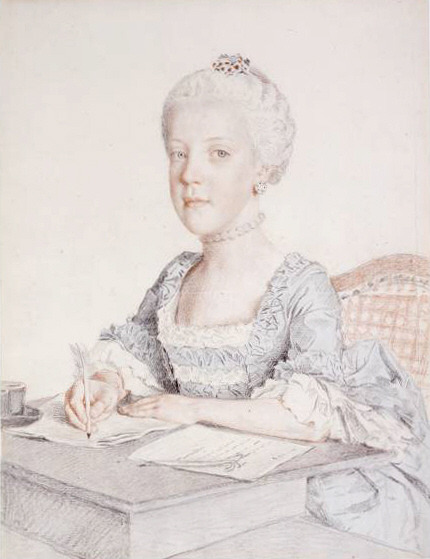
Hardly any of her children could live up to their mother’s high standards. She was unsparing in her criticism of them, the educators, and their companions. She permitted herself no illusions or prejudices in her children’s favor, and she required their teachers and confessors to speak candidly with her about their faults. With regard to her daughter Josepha, for example, she wrote that she had an unlovely face, a strange disposition, and was not particularly “able.” She was prone to dissimulation and treated her servants poorly. In general, there was something coarse and unbecoming about her conduct. She described the six year old Johanna as gifted but willful; she had a strong head and a stubborn streak that would need to be broken.
Maria Theresa: The Habsburg Empress in Her Time - Barbara Stollberg-Rilinger
#maria josepha of austria#Maria Johanna Gabriela of Austria#maria theresa#house of habsburg lorraine#austria#archduchess#long live the queue#JFC maria Theresa weren't you a LOVELY mother....
46 notes
·
View notes